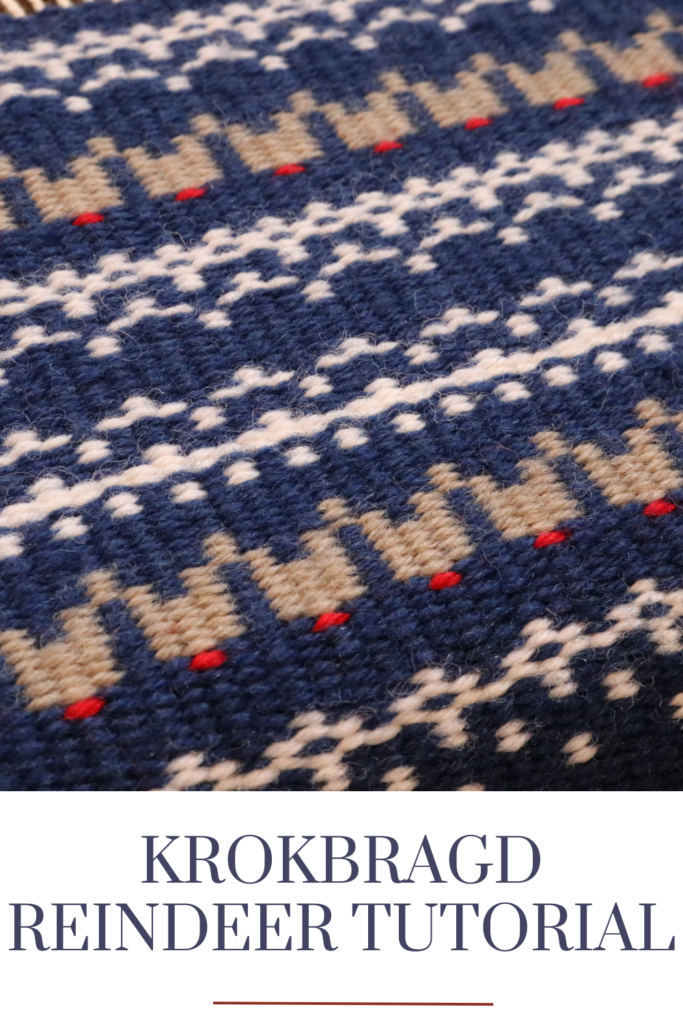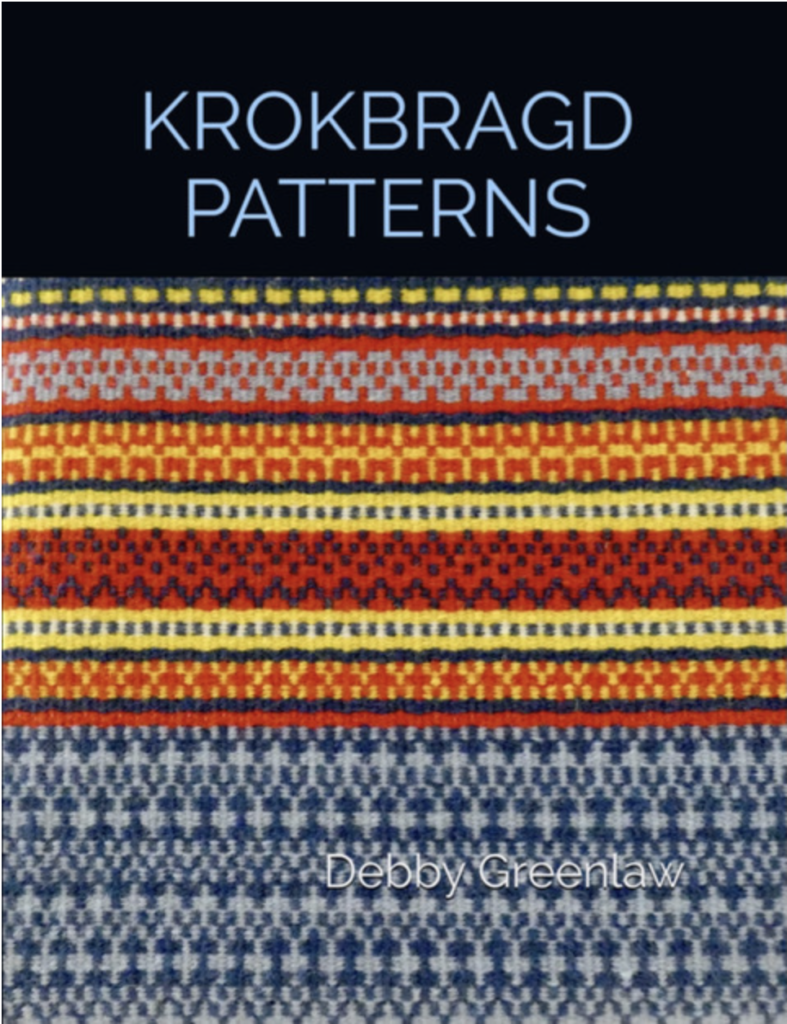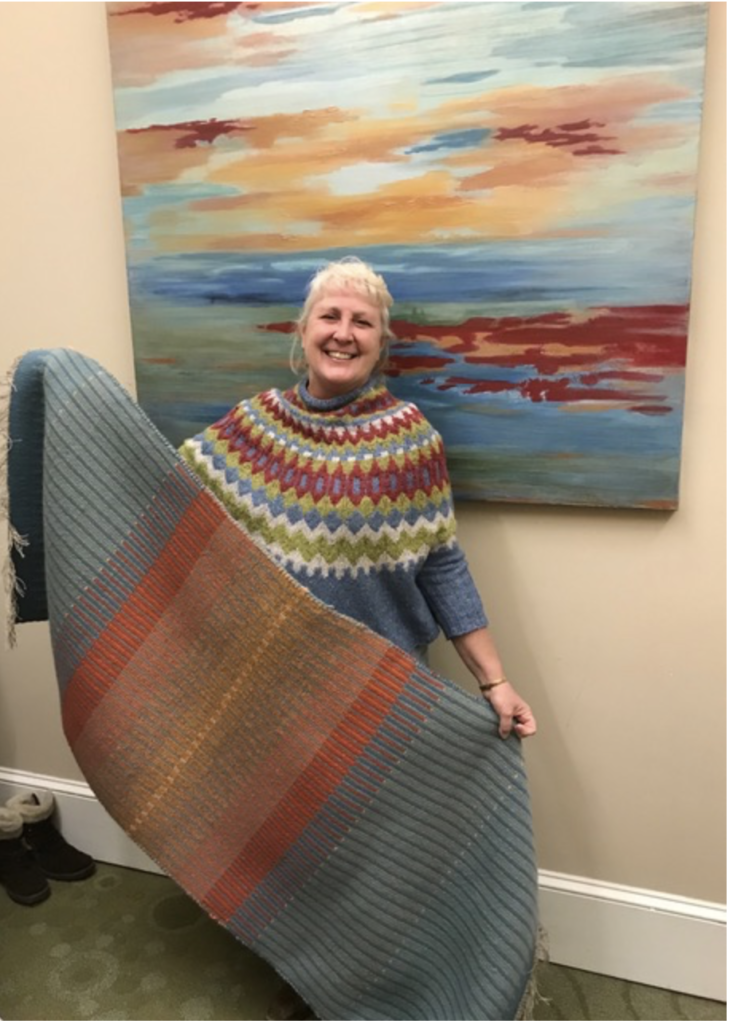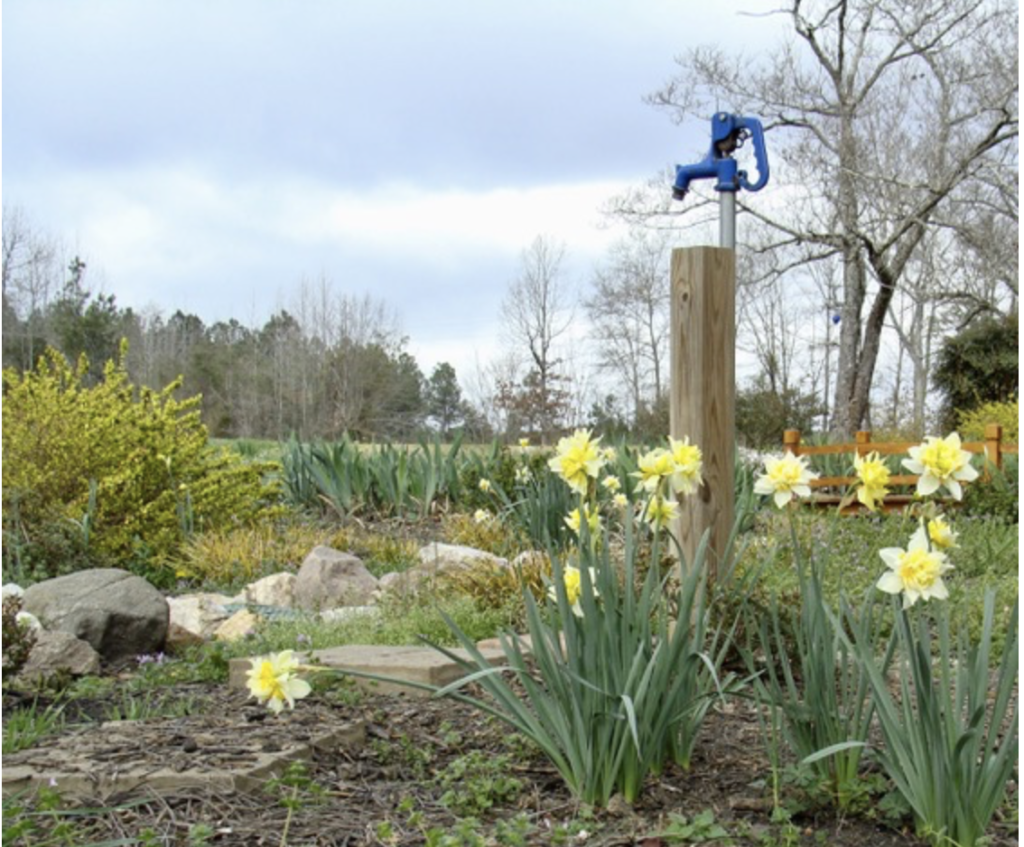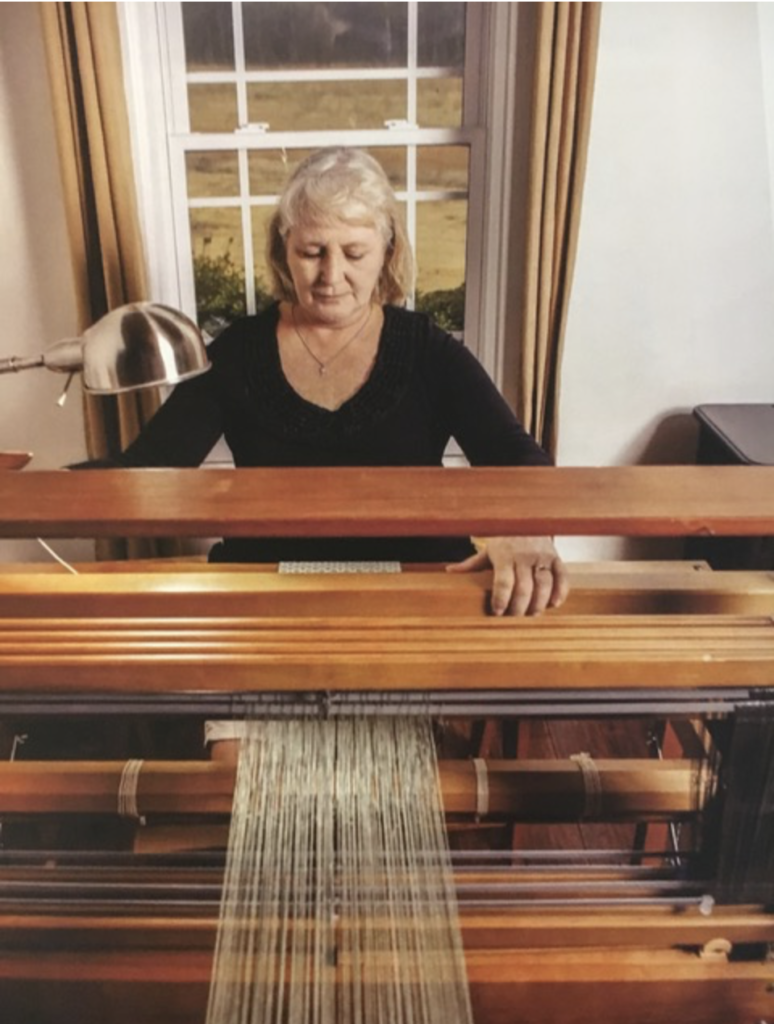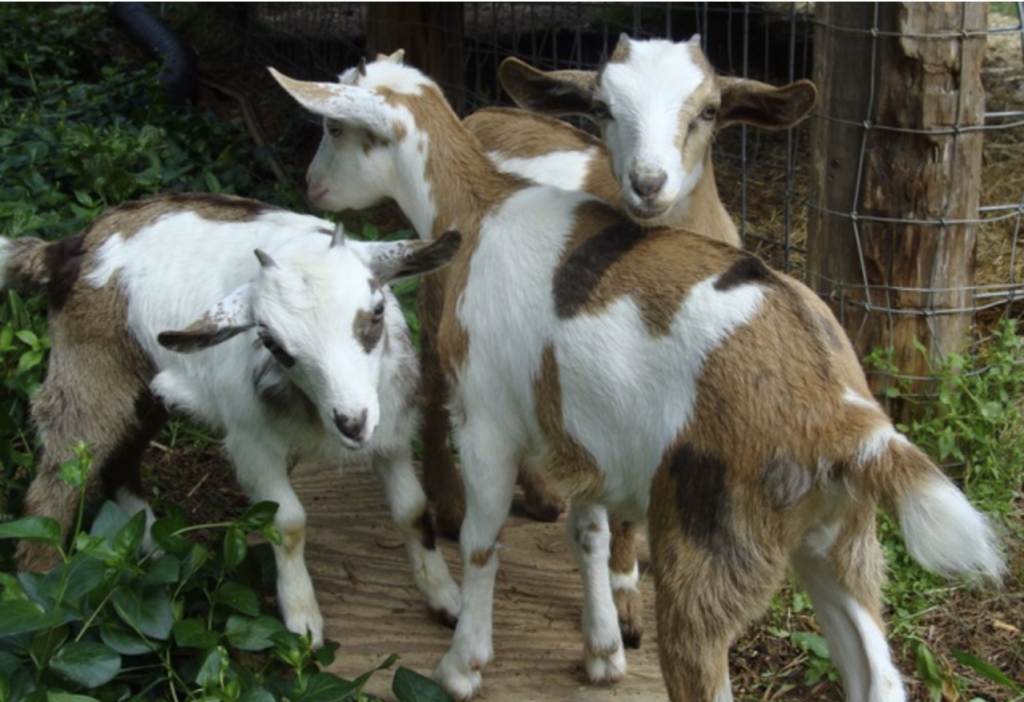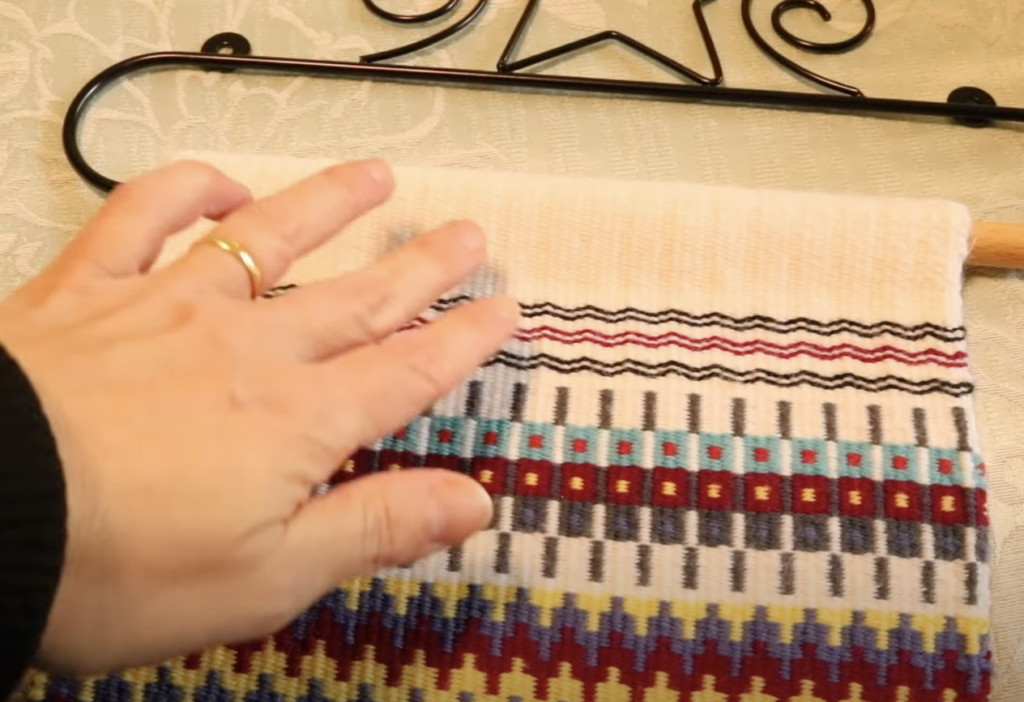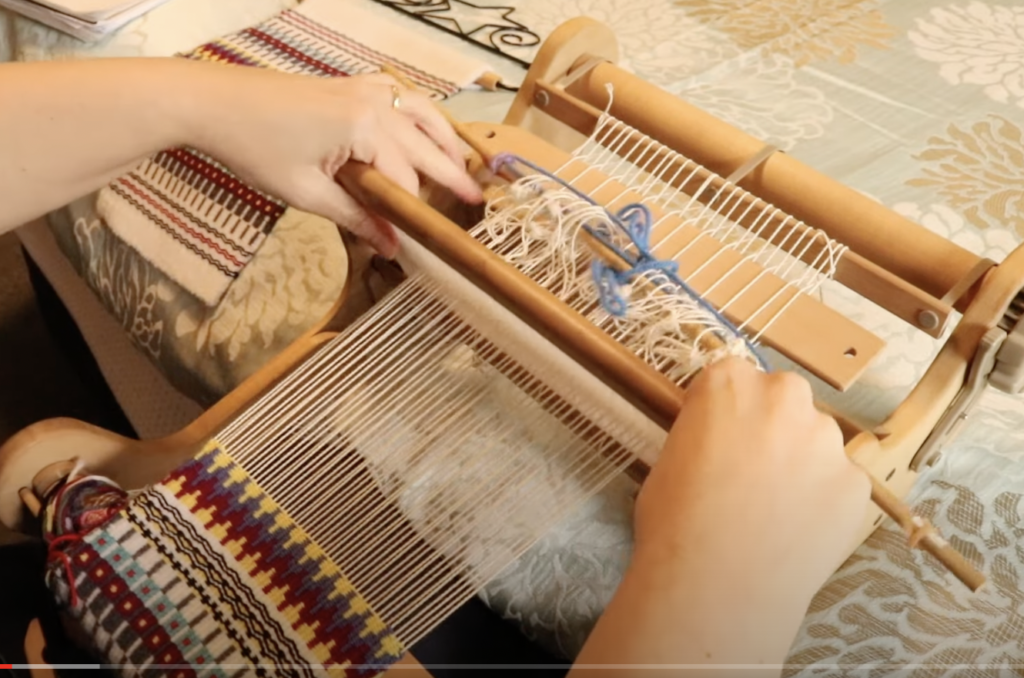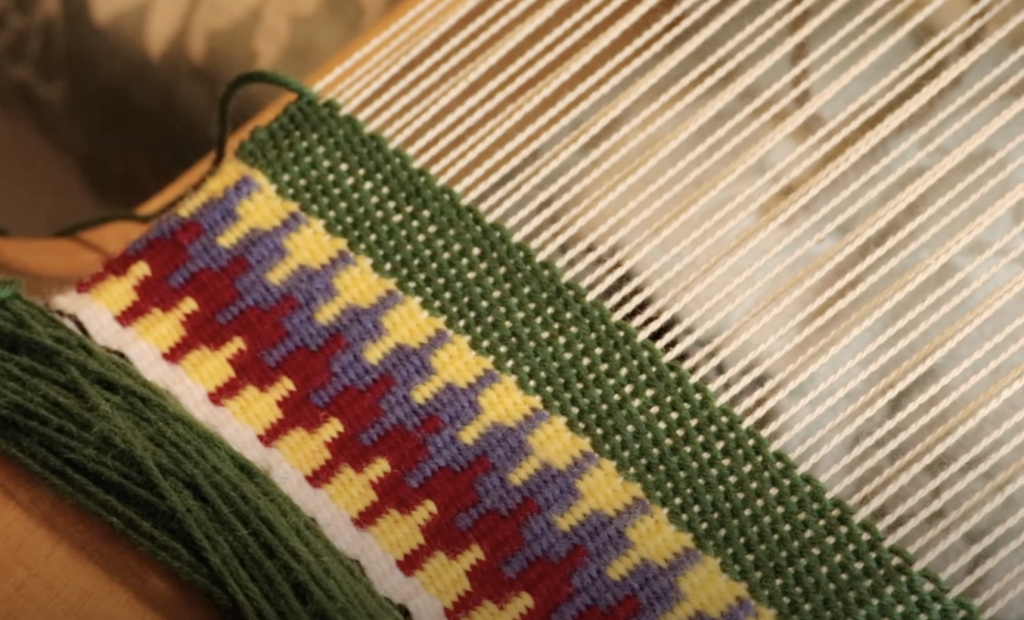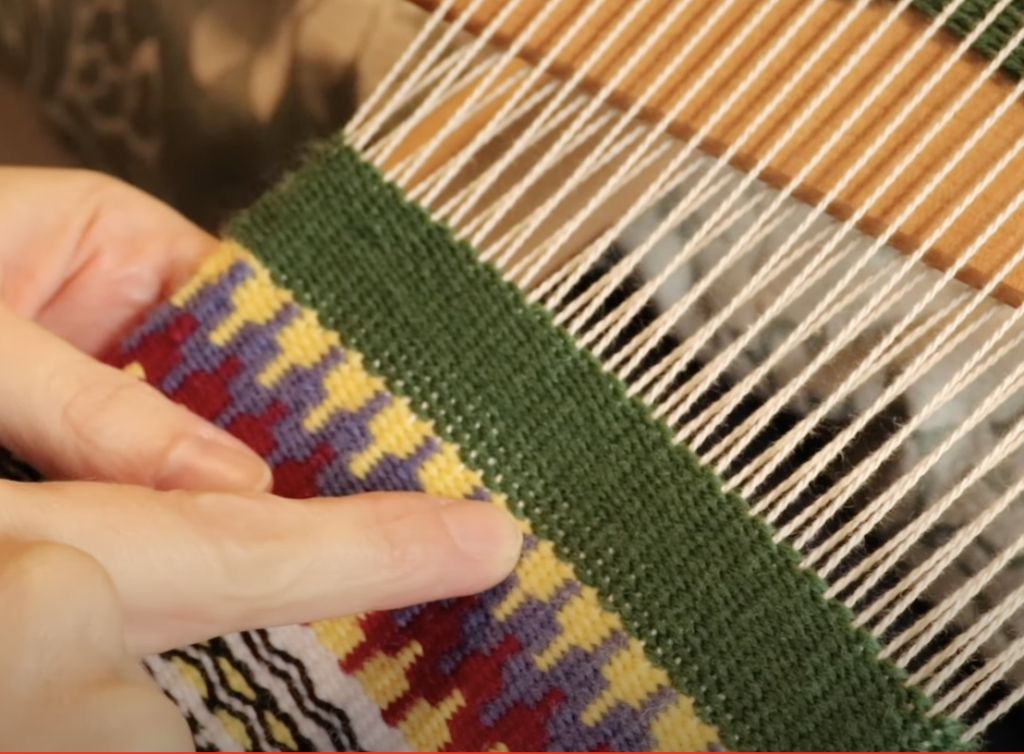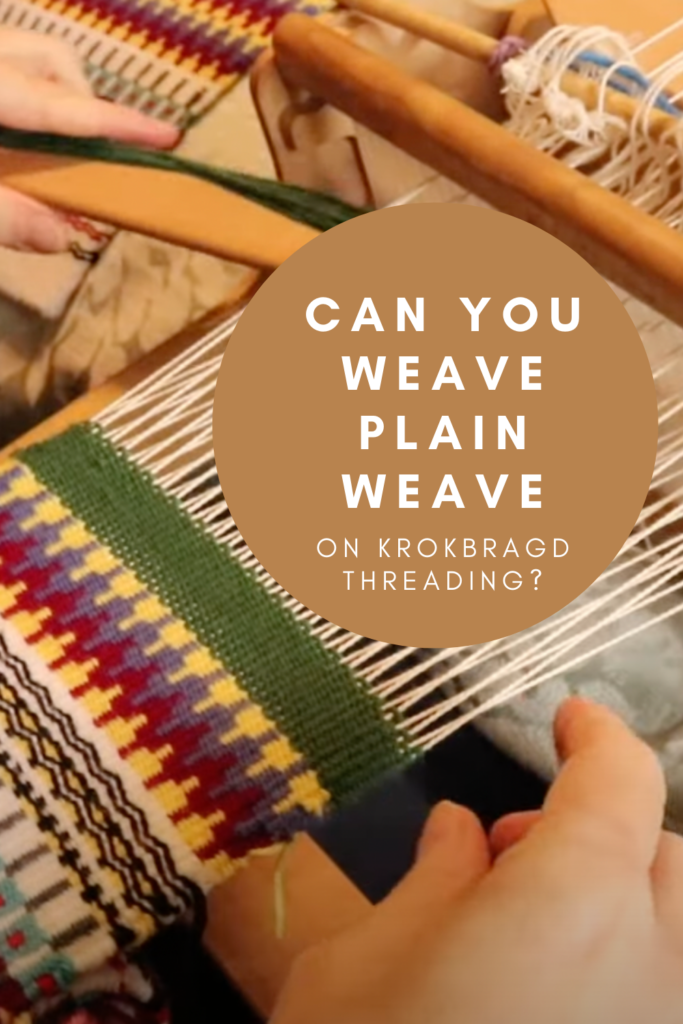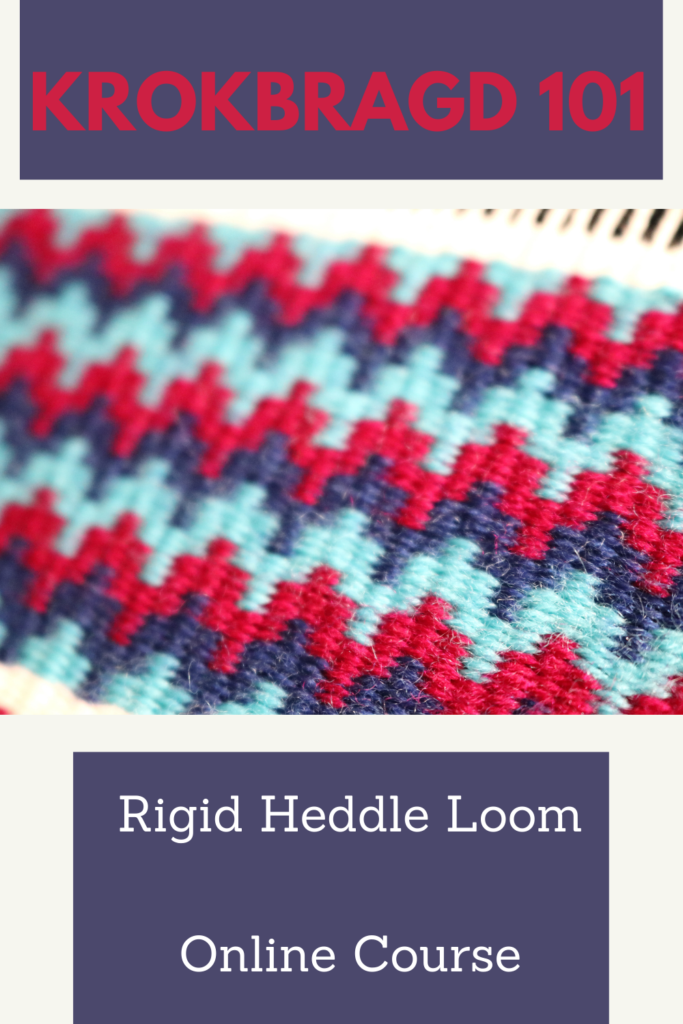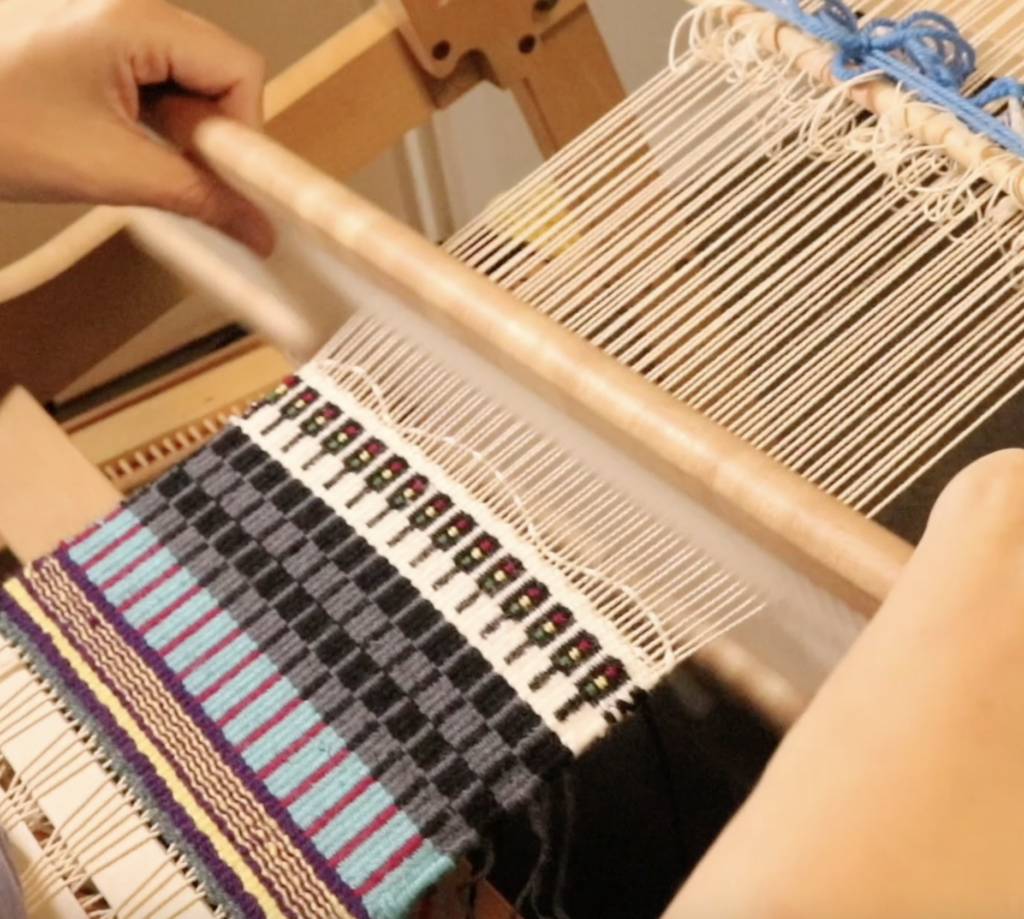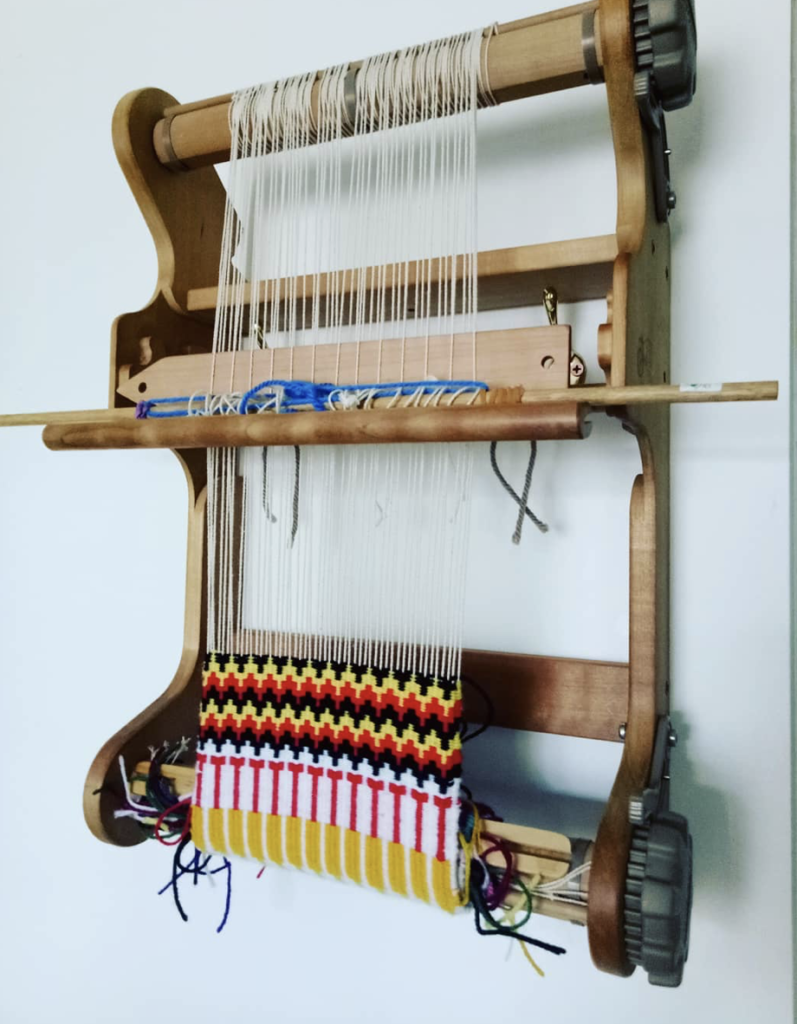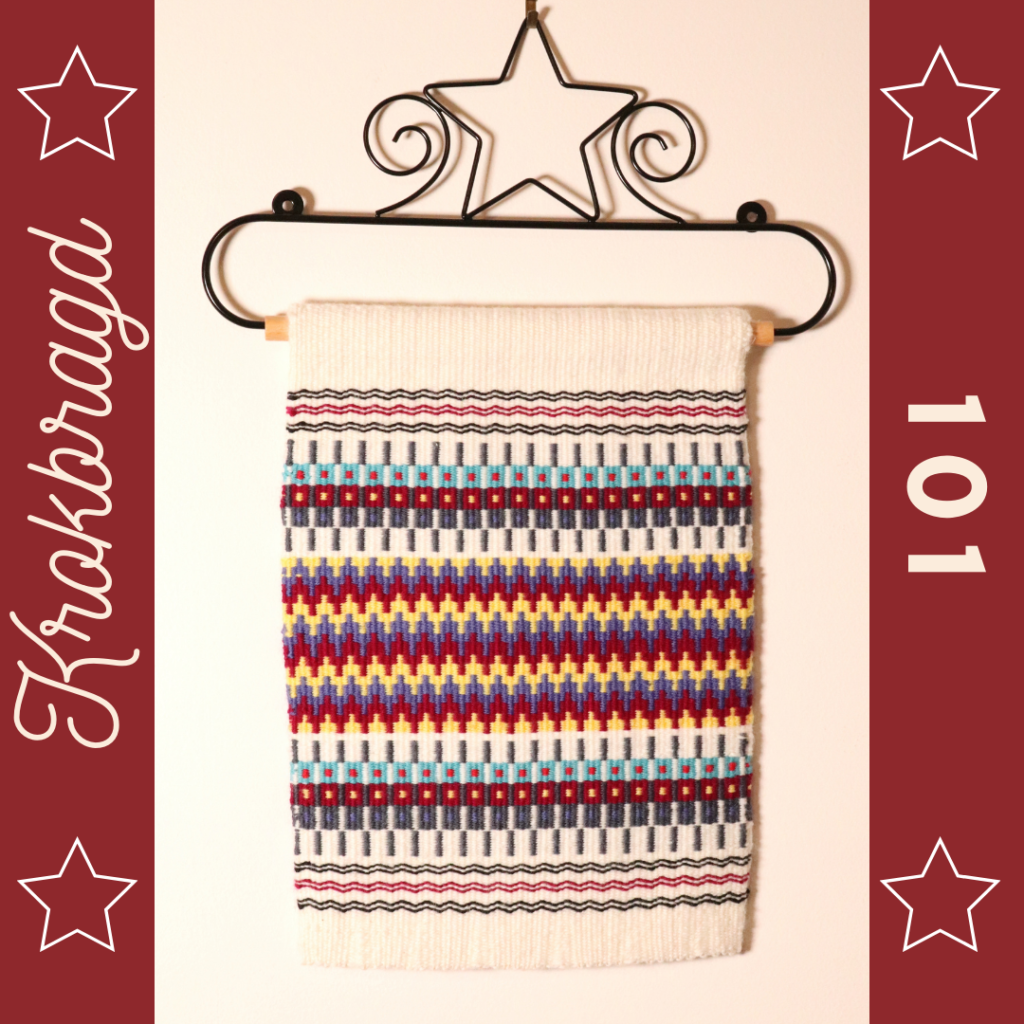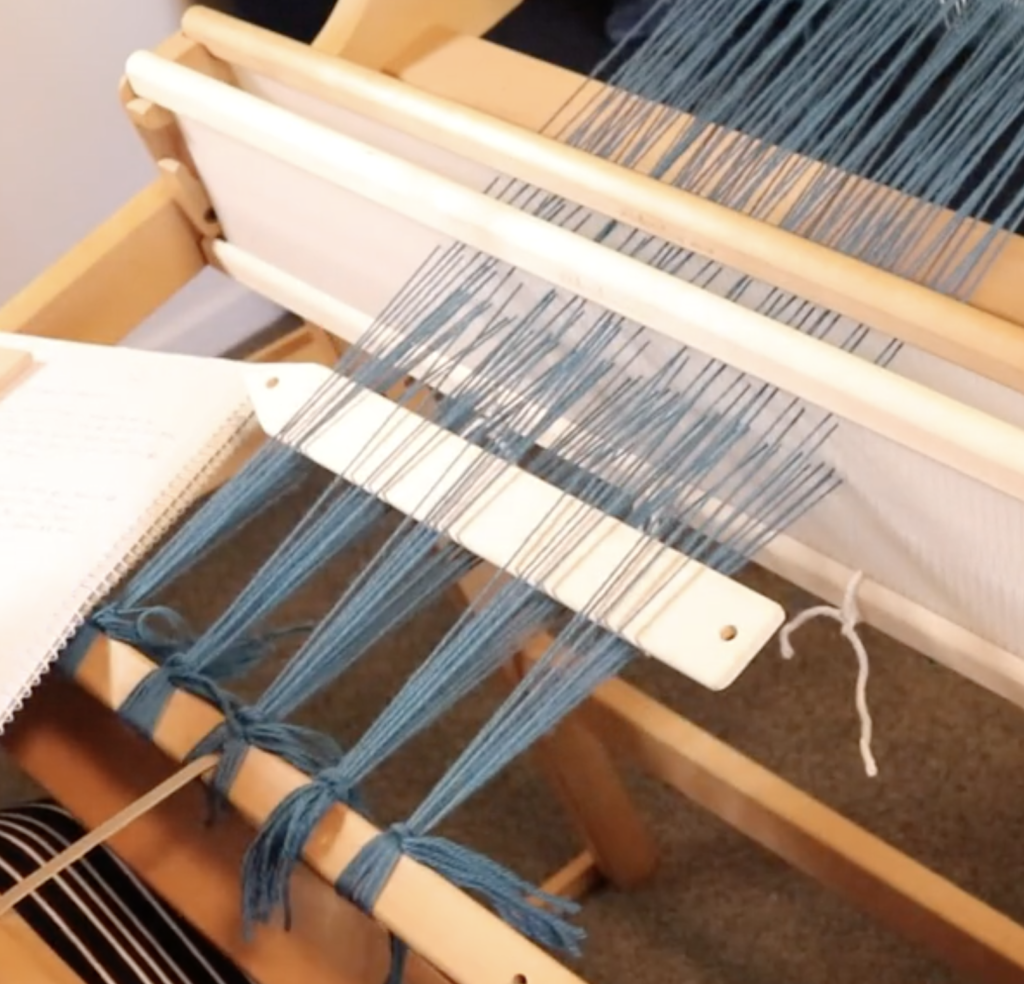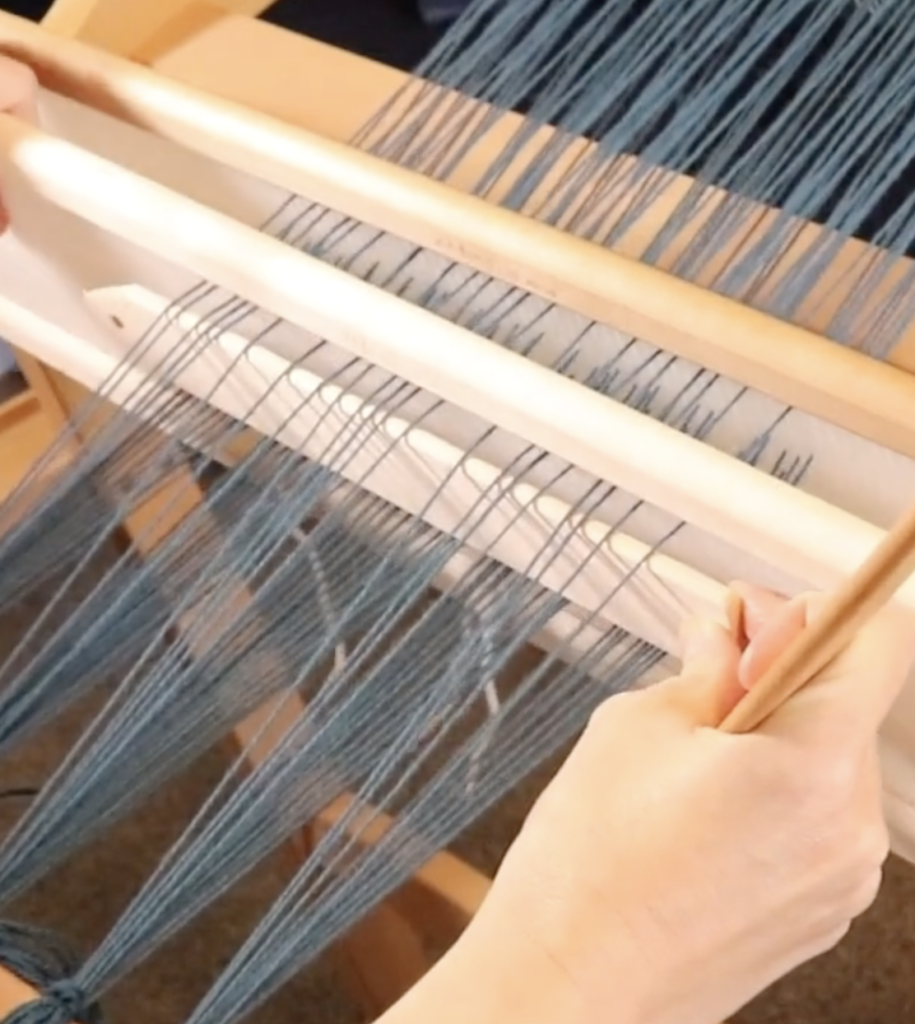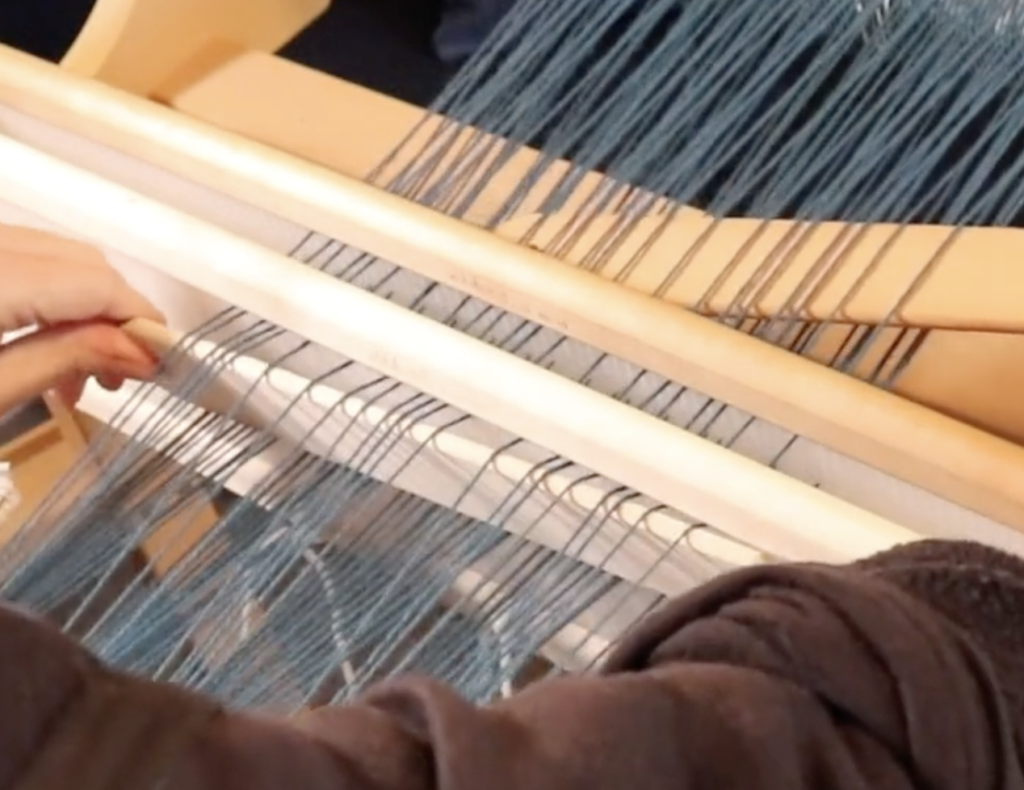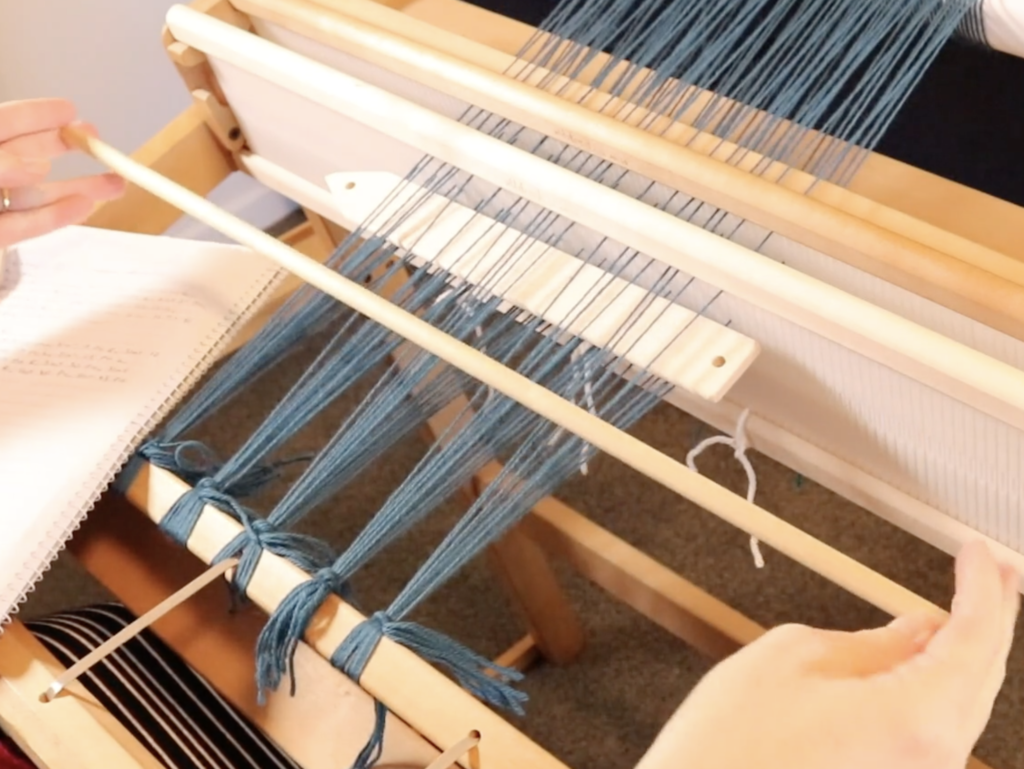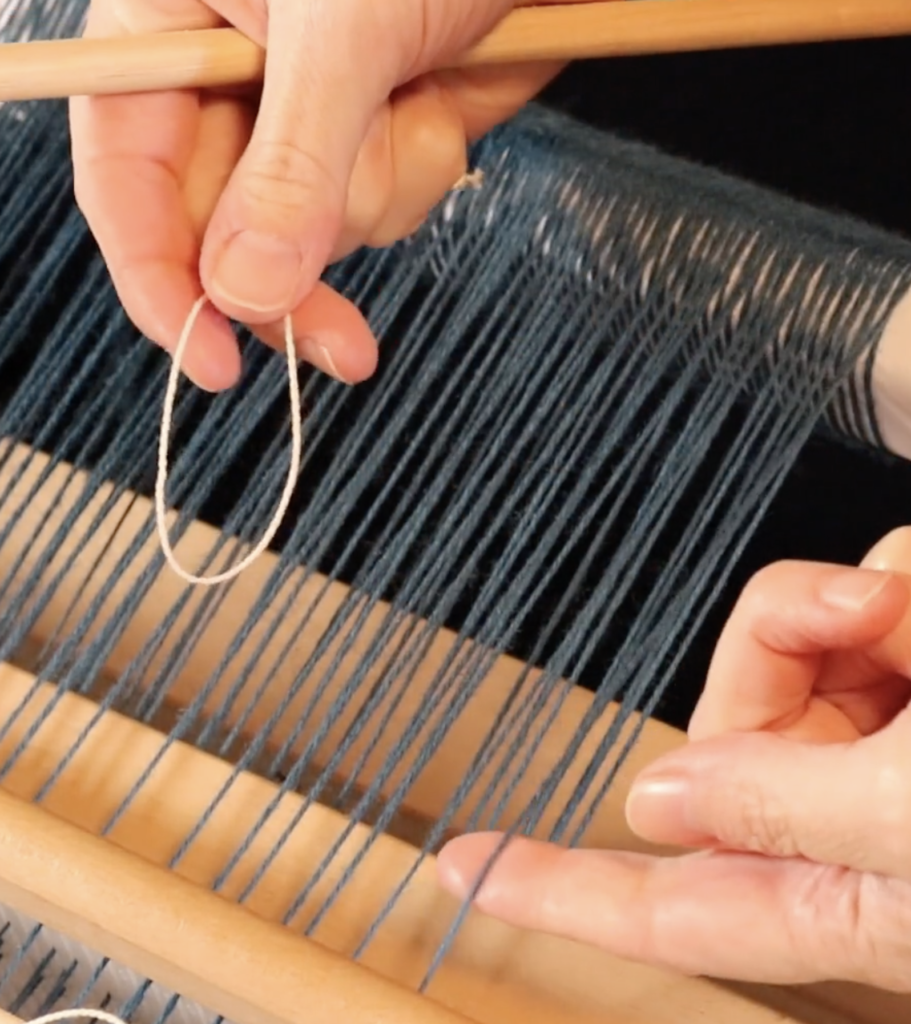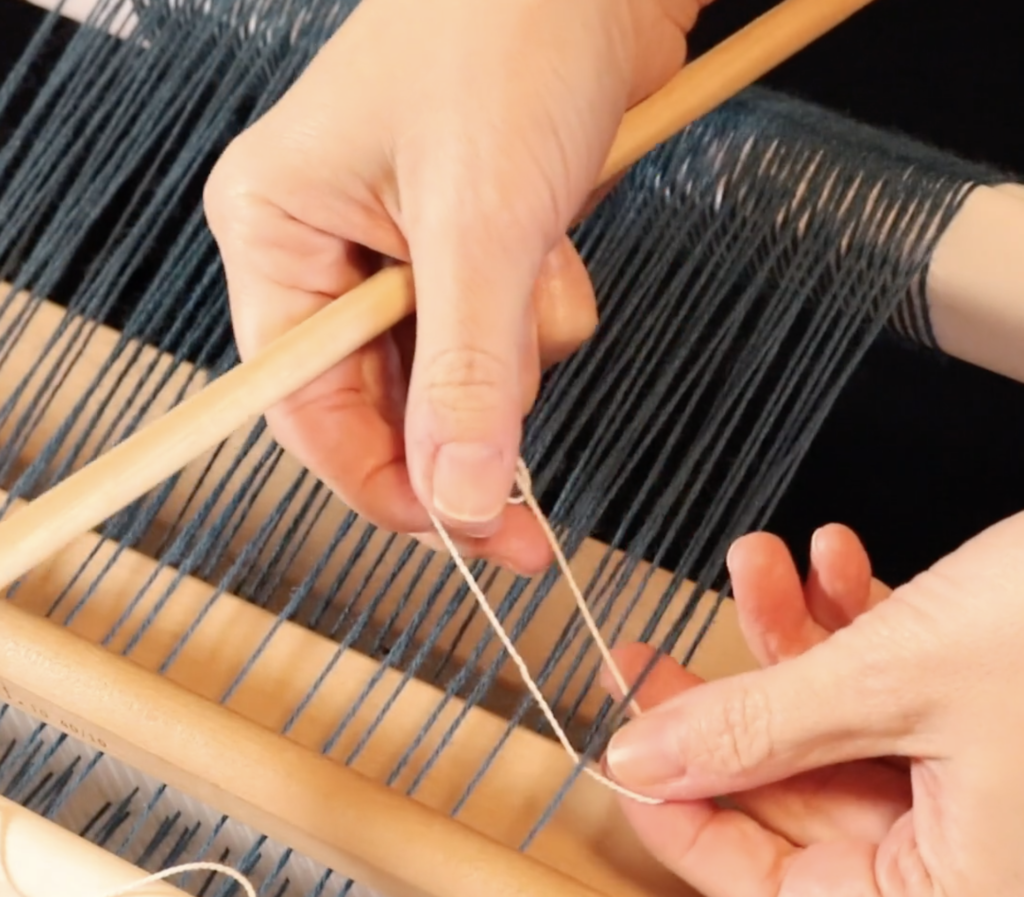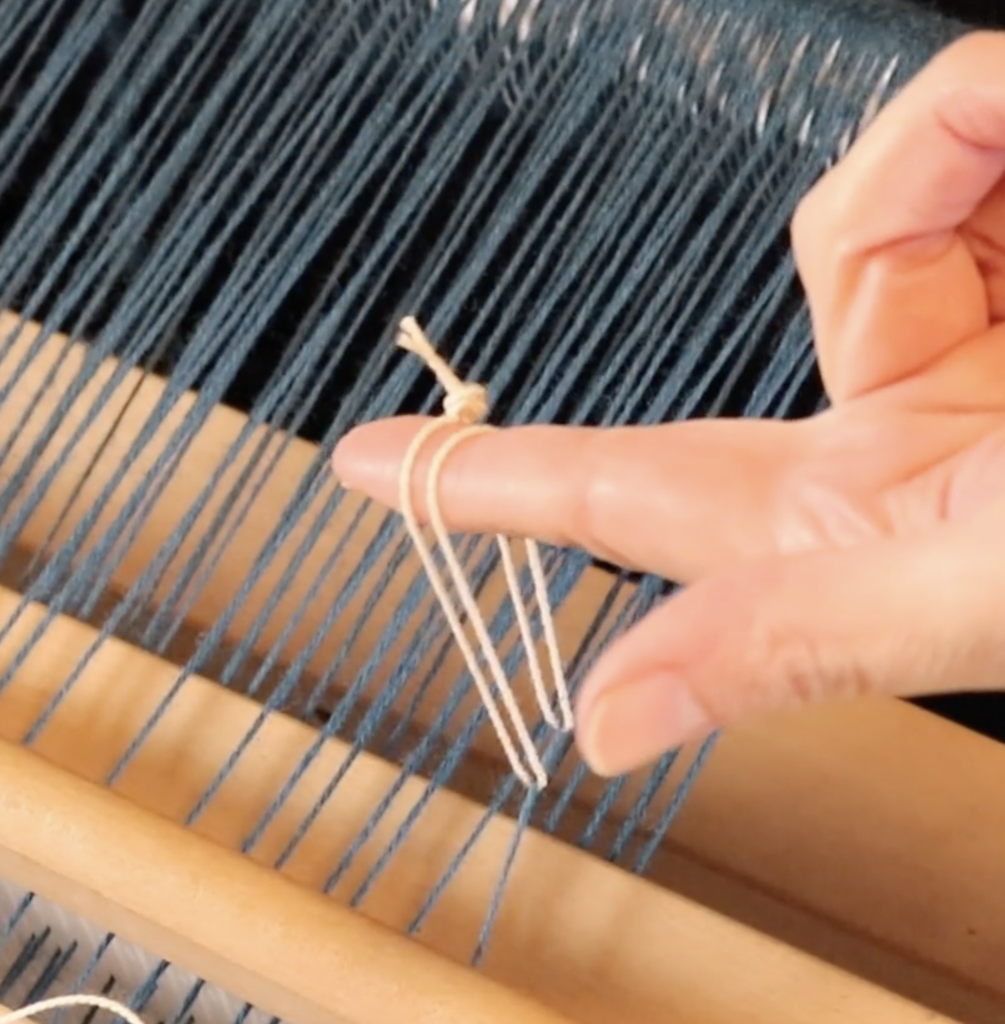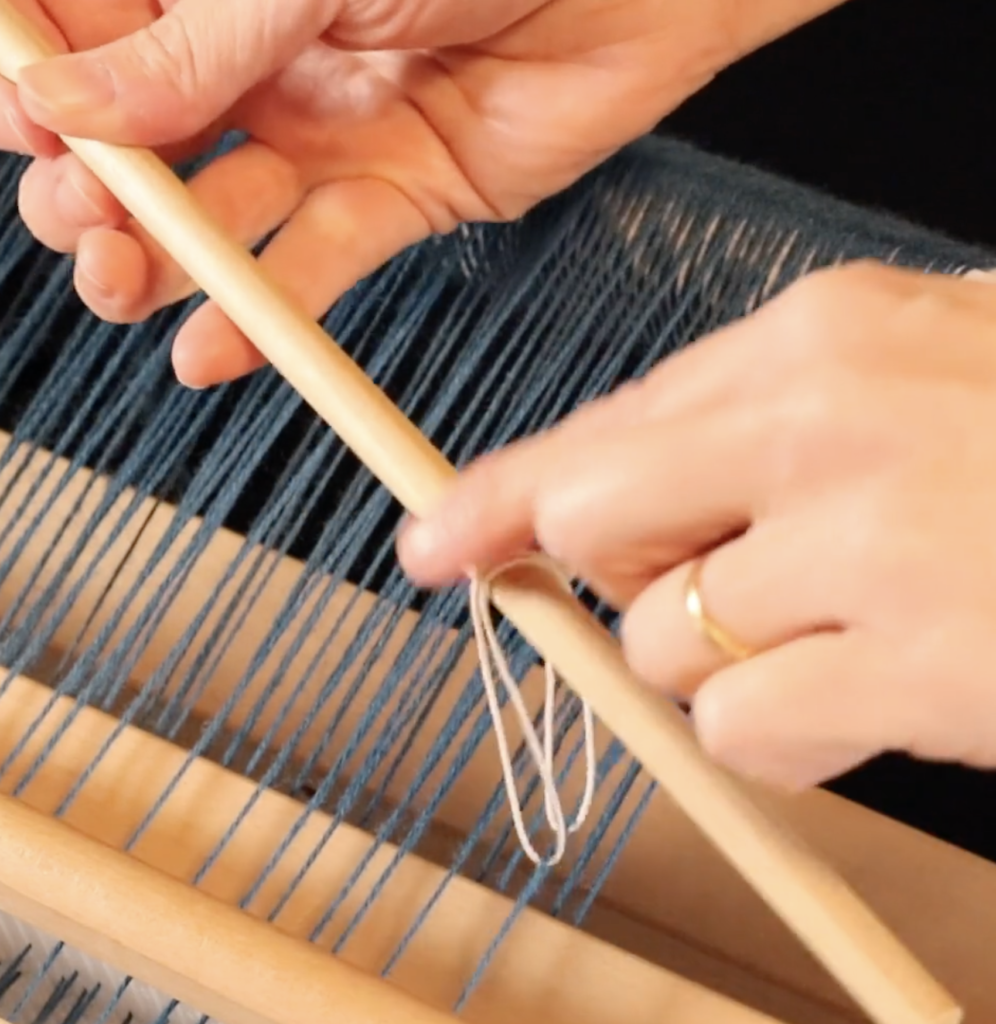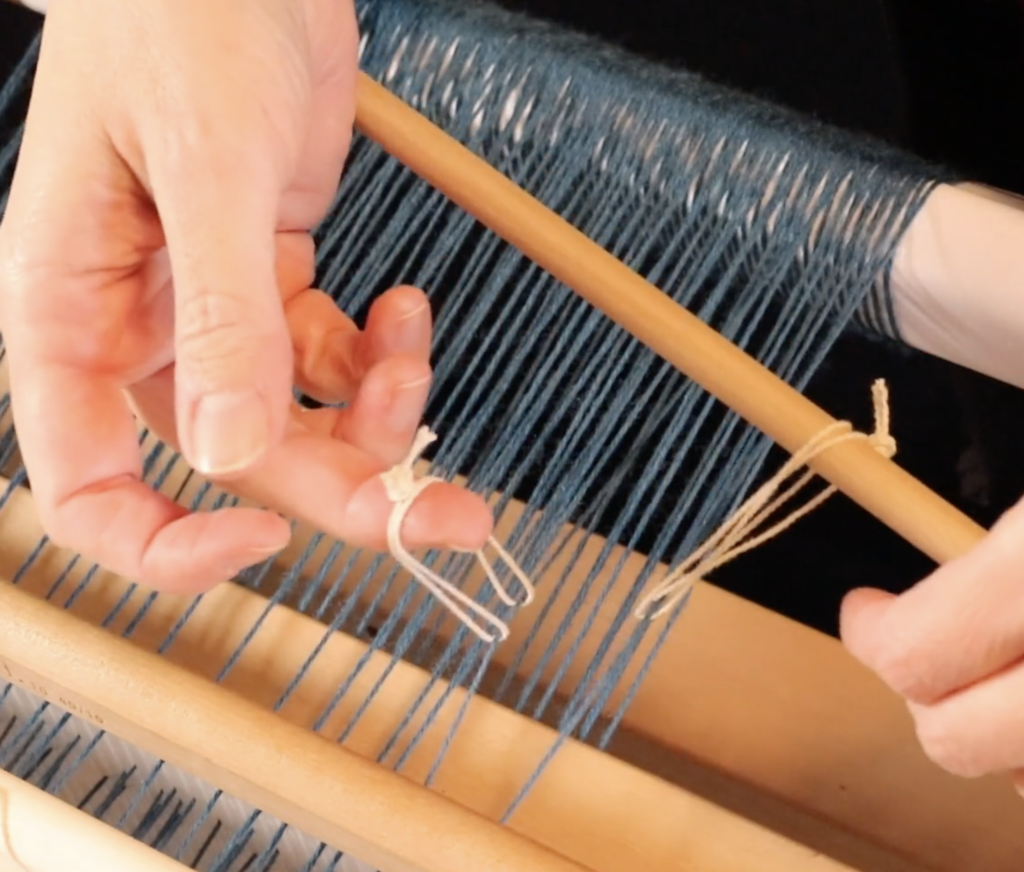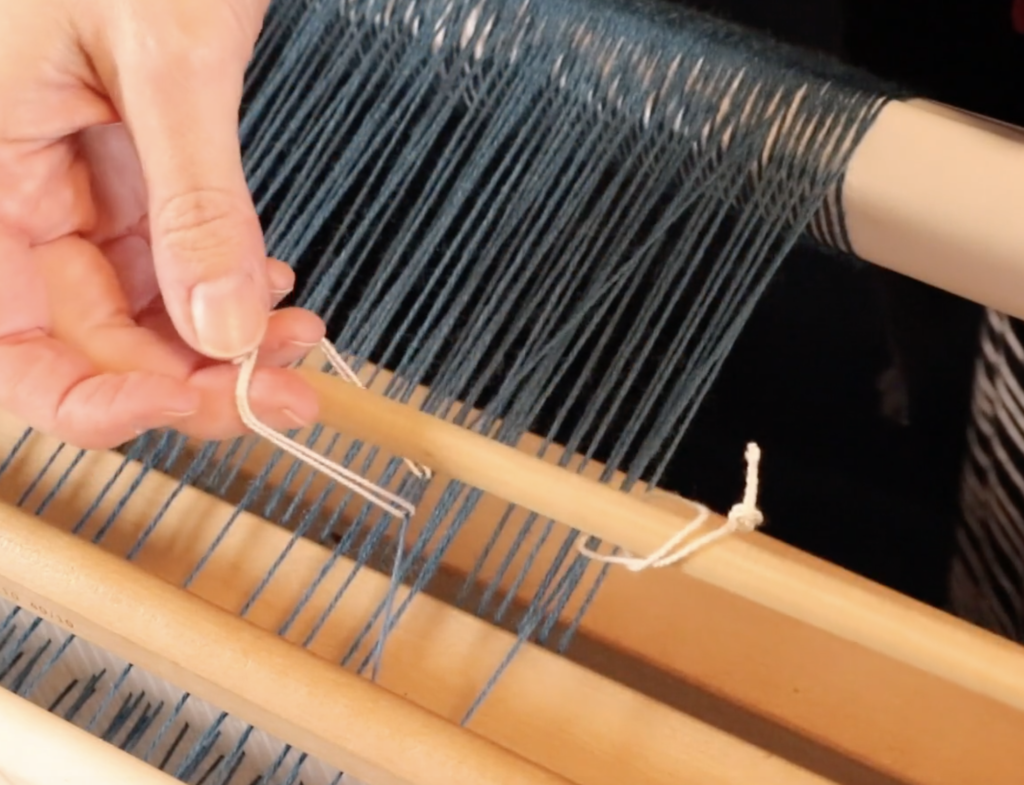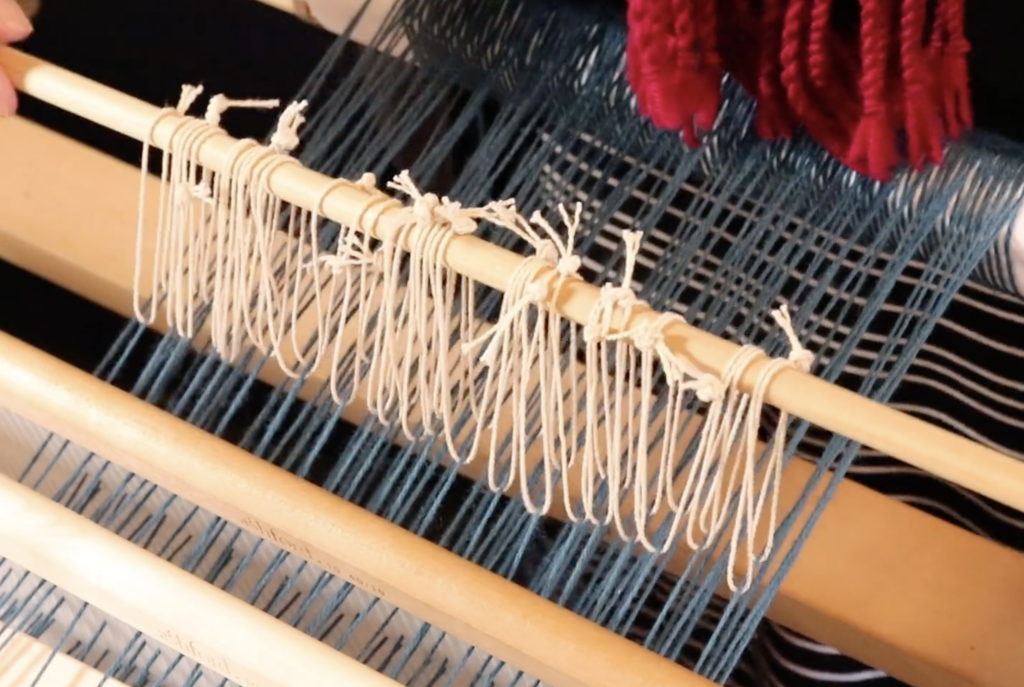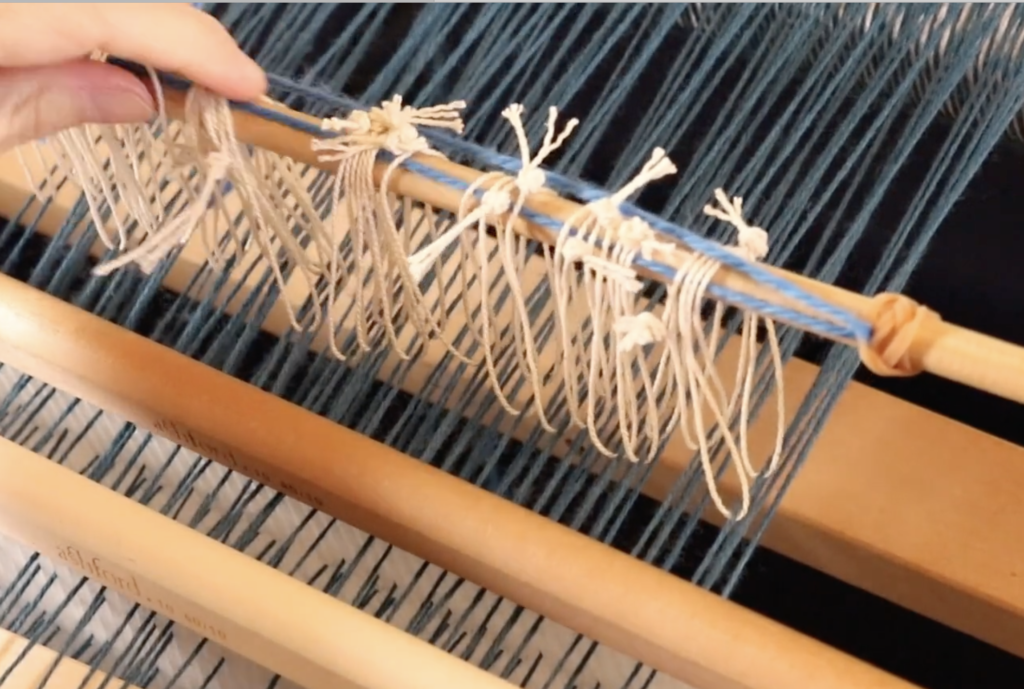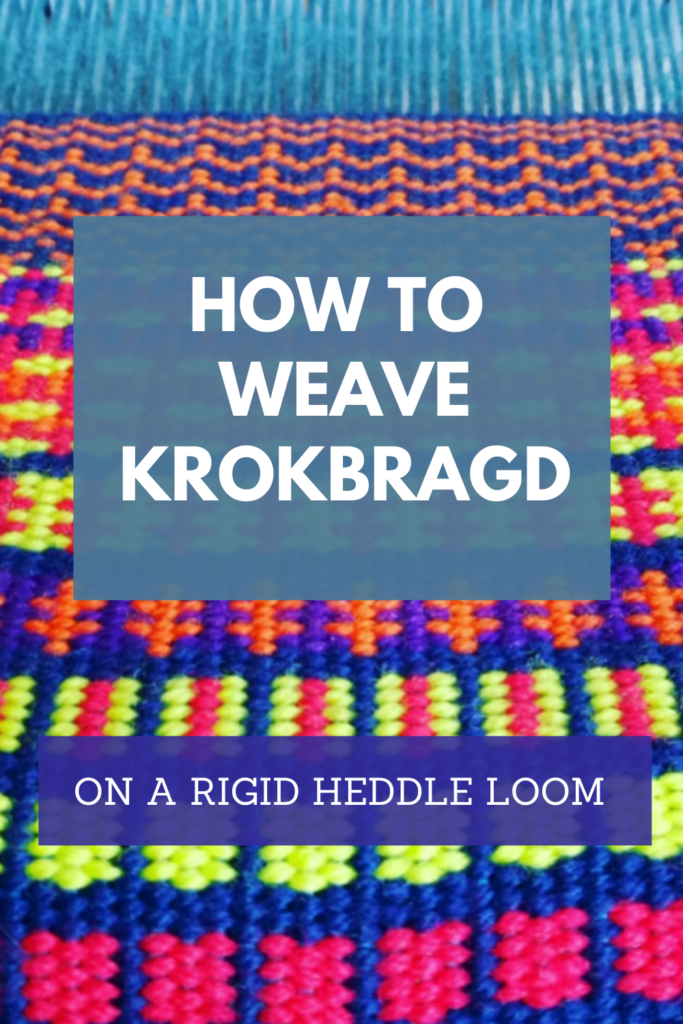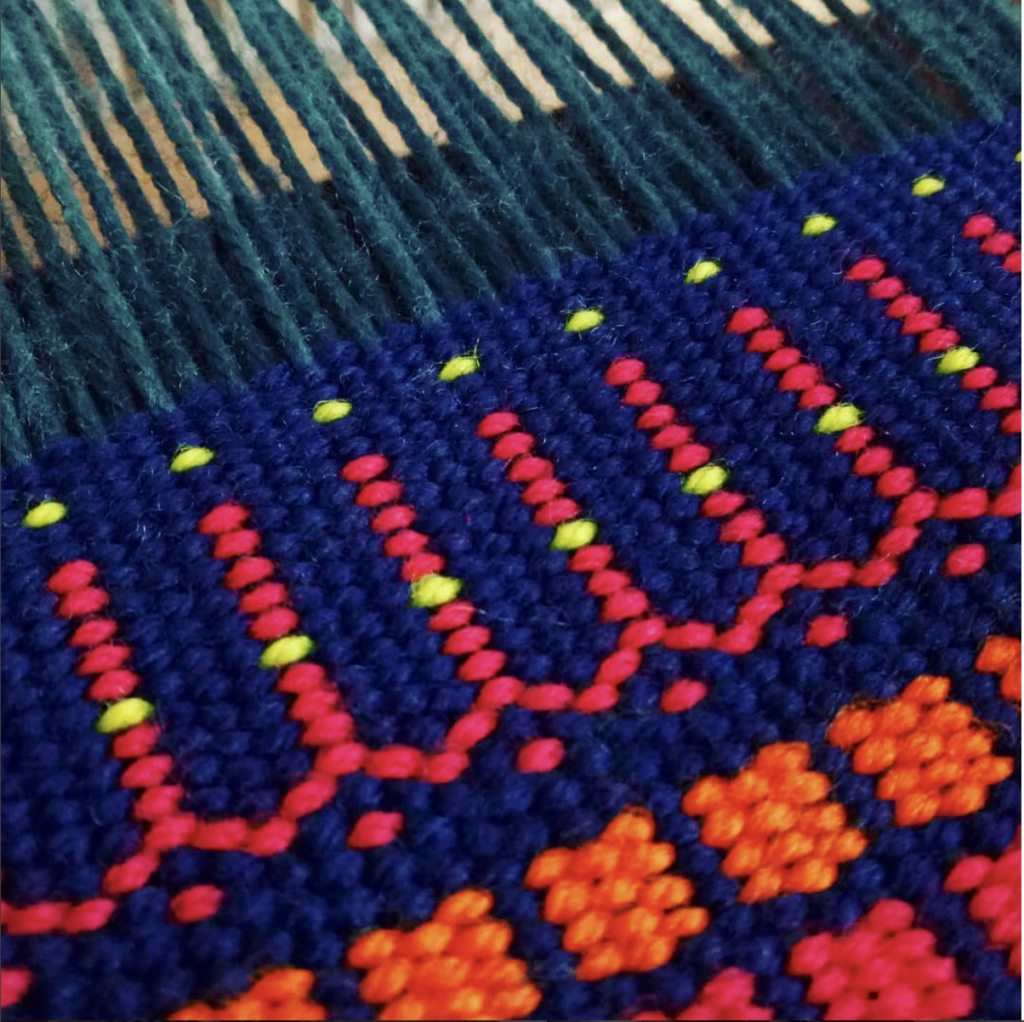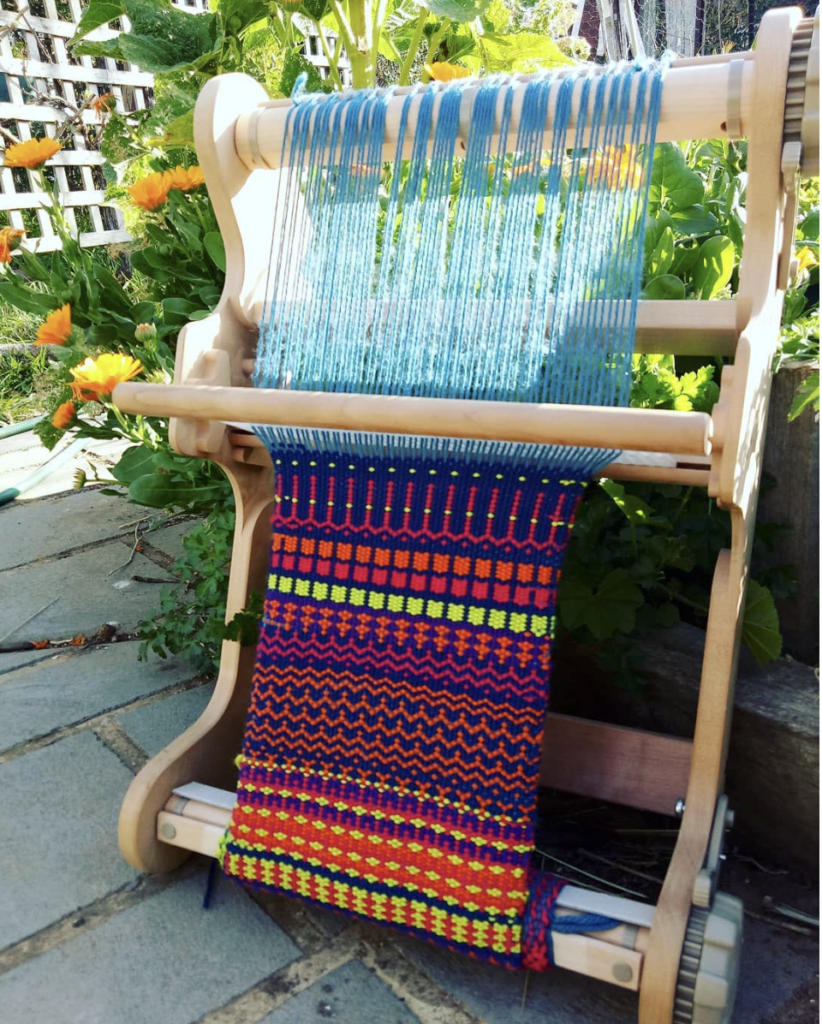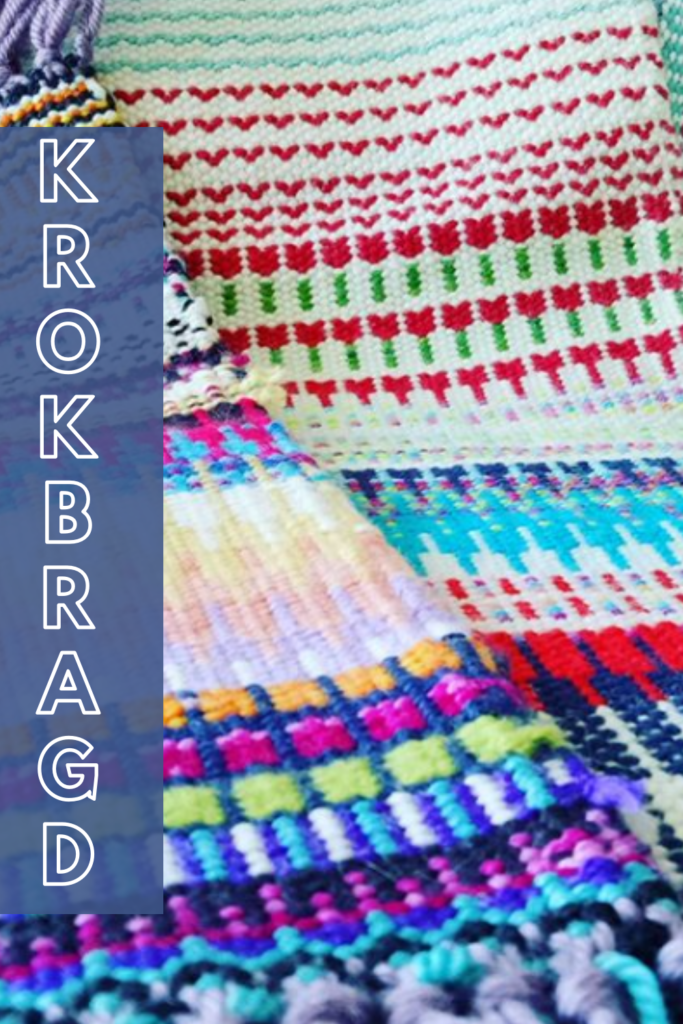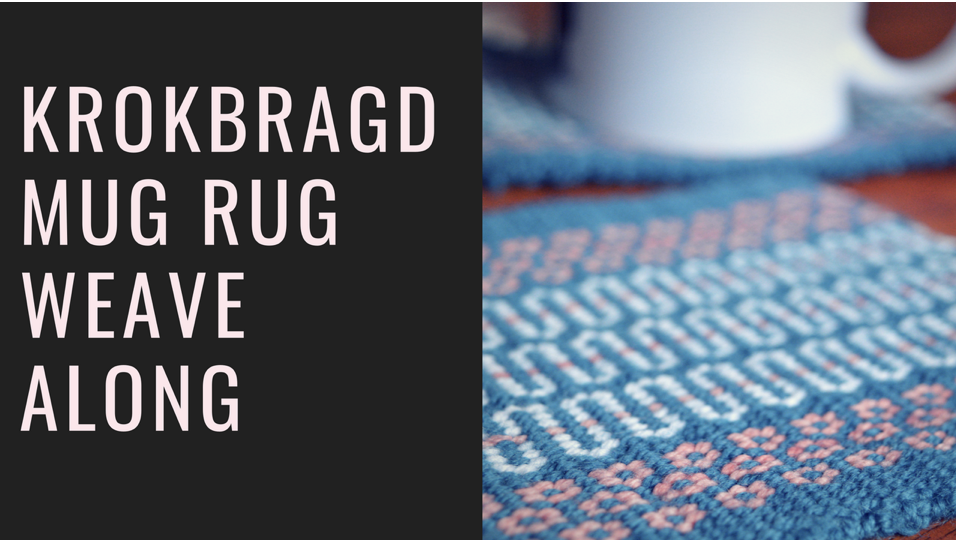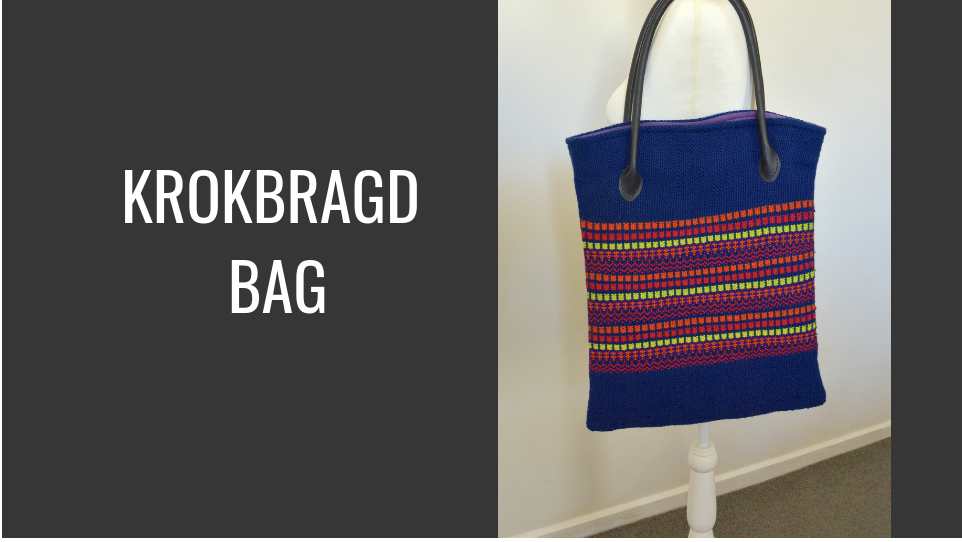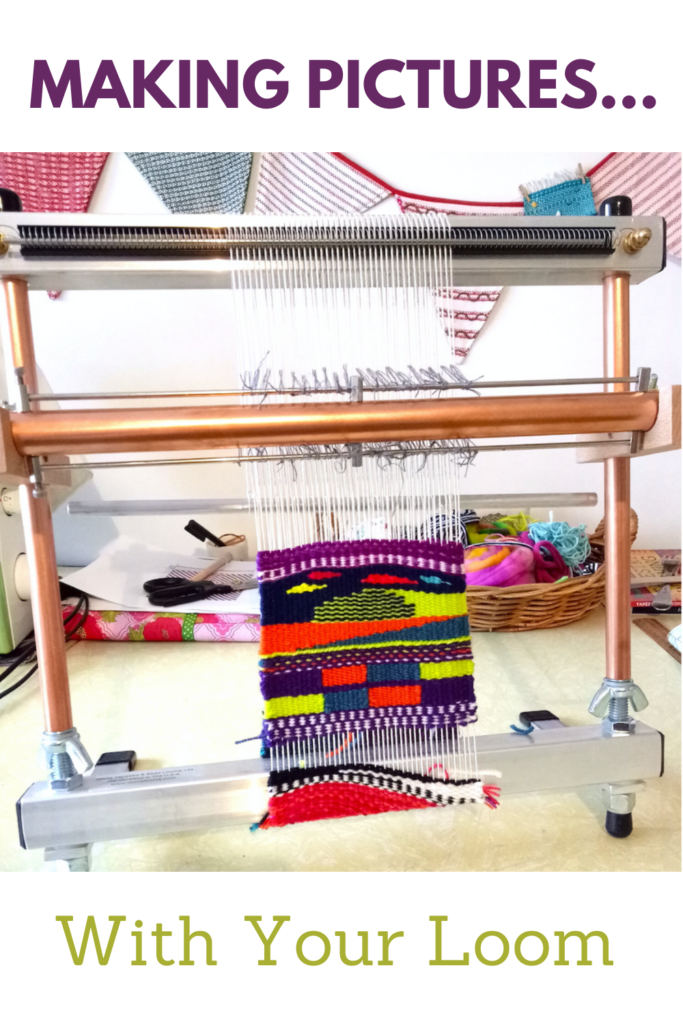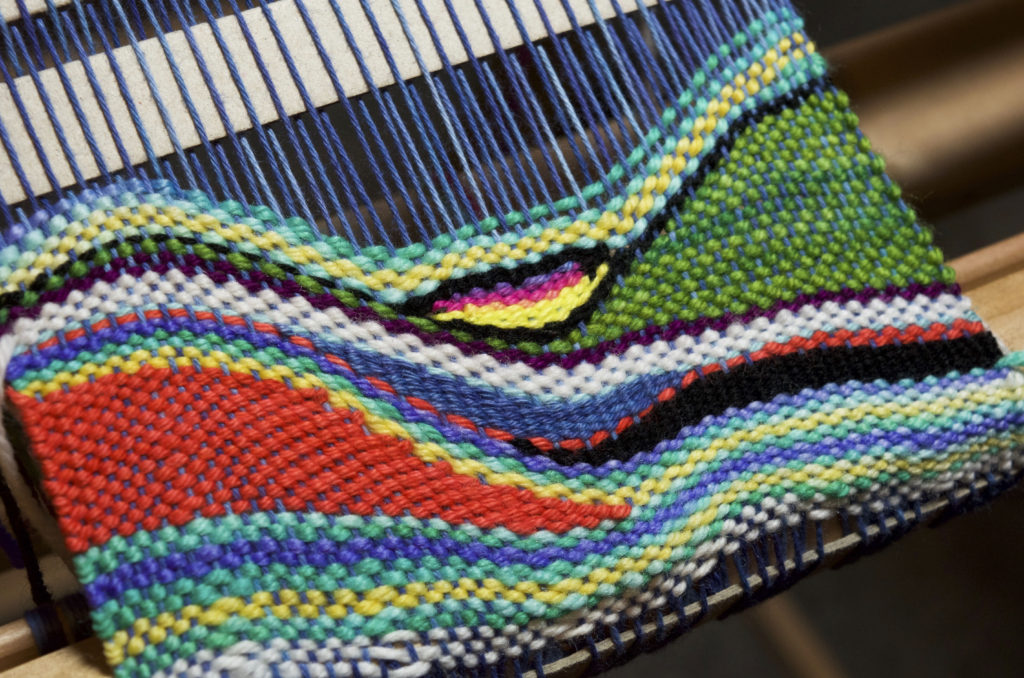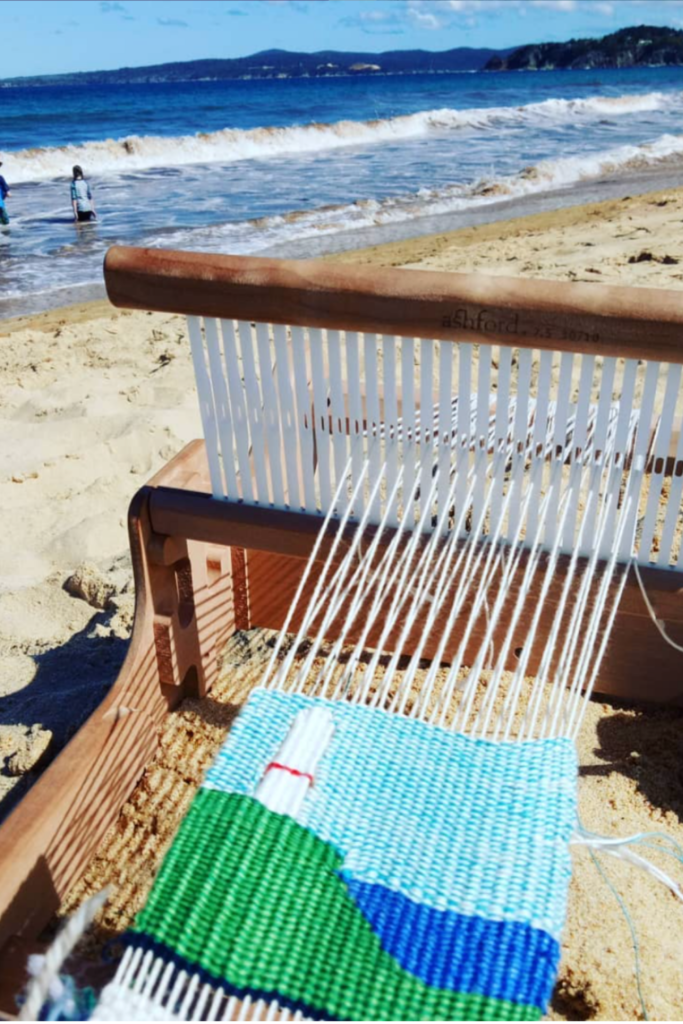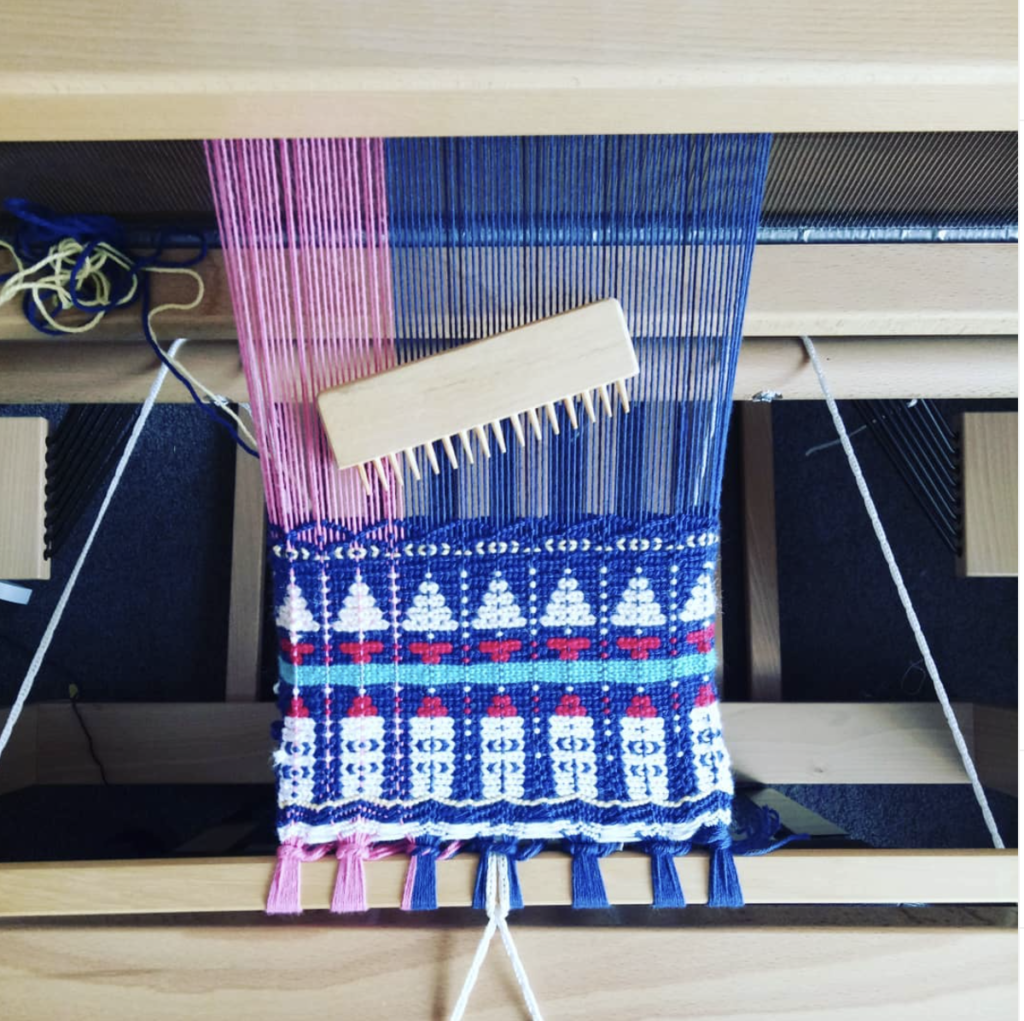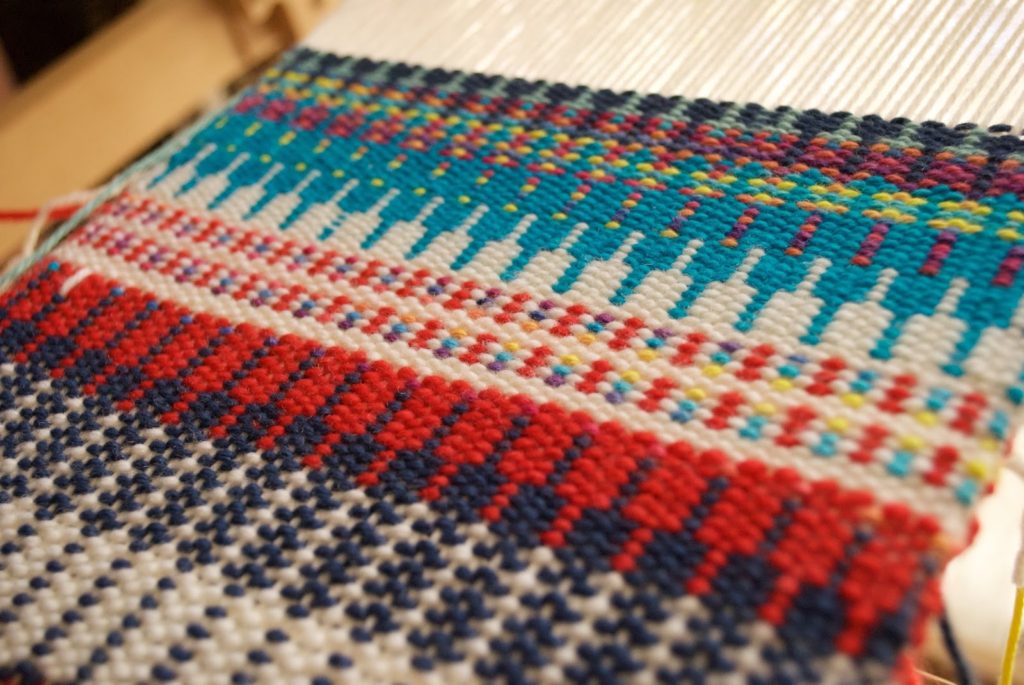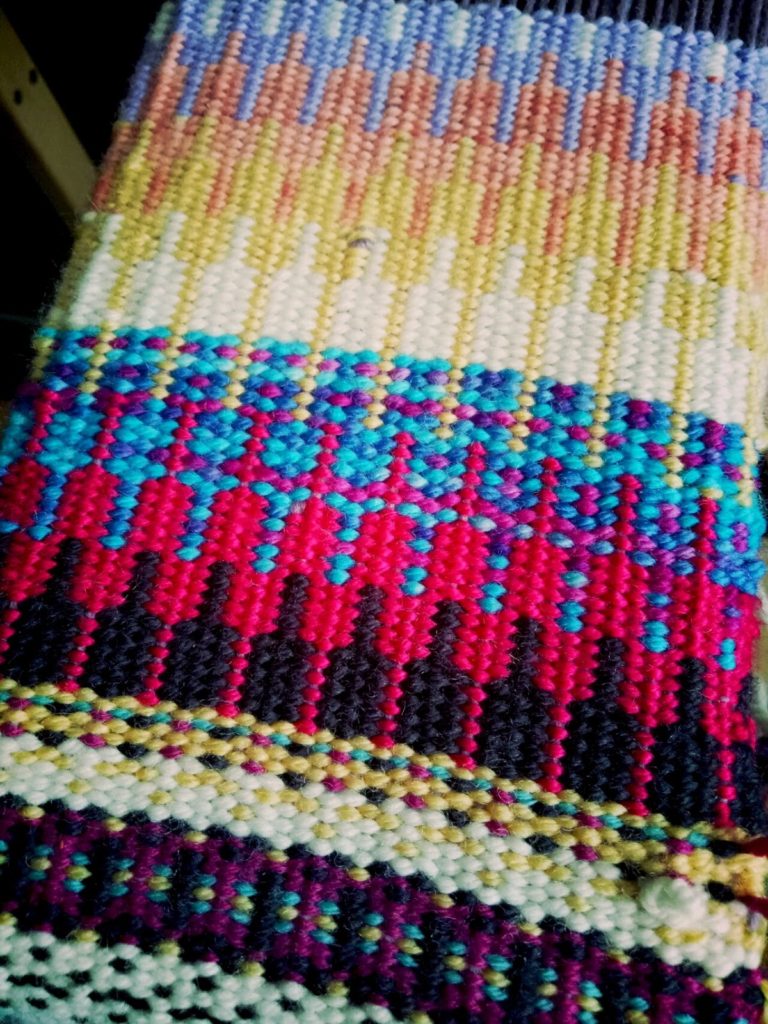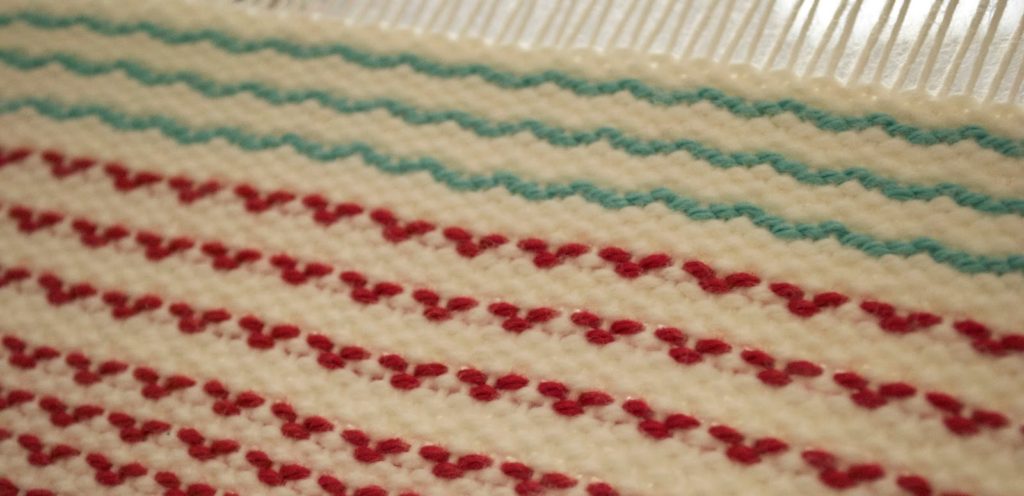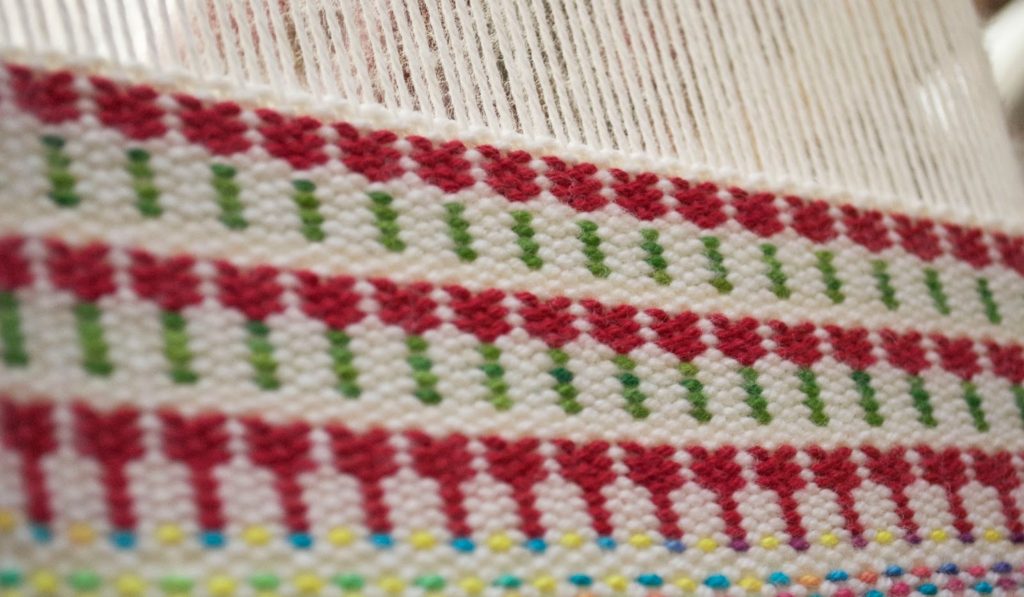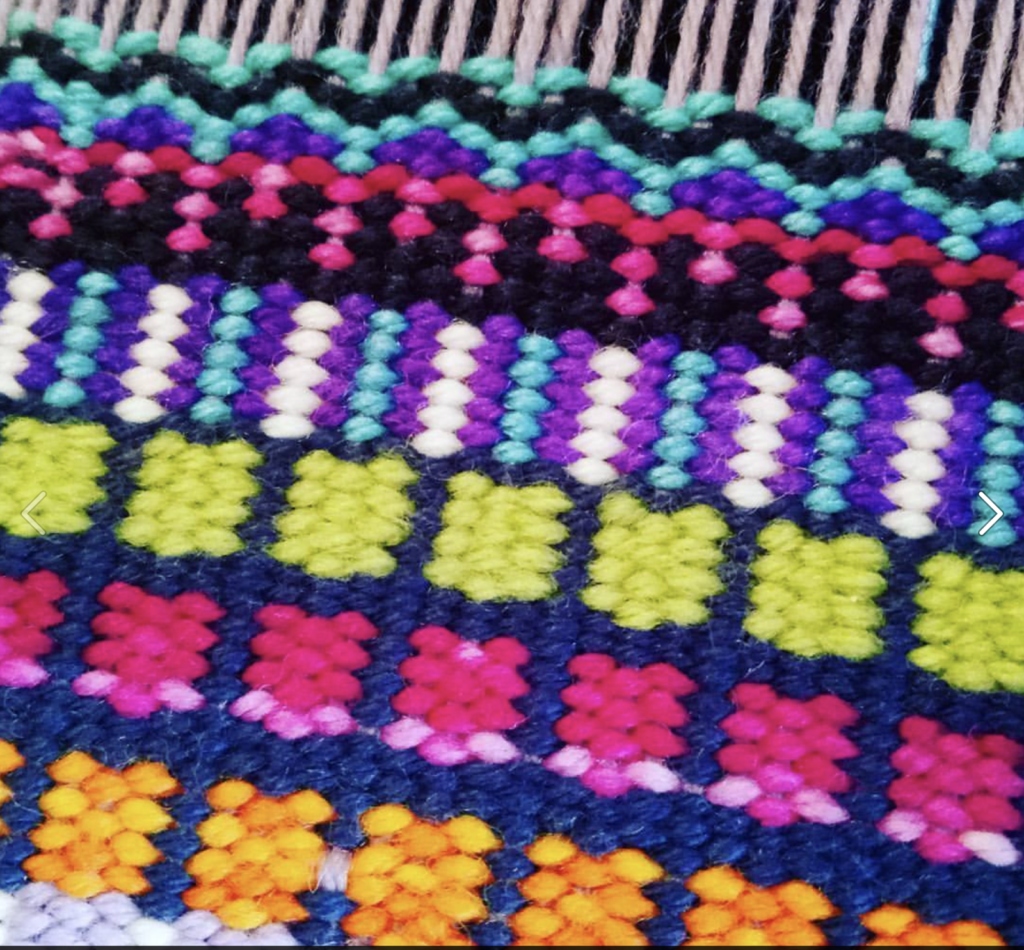Here we are with yet another krokbragd weaving tutorial! It is close to Easter and so the design I chose to weave is in honour of our Lord Jesus Christ ❤️
I won’t explain what krokbragd is, because I have done that already, many times! Instead, if you want to know more, check out some of these links below:
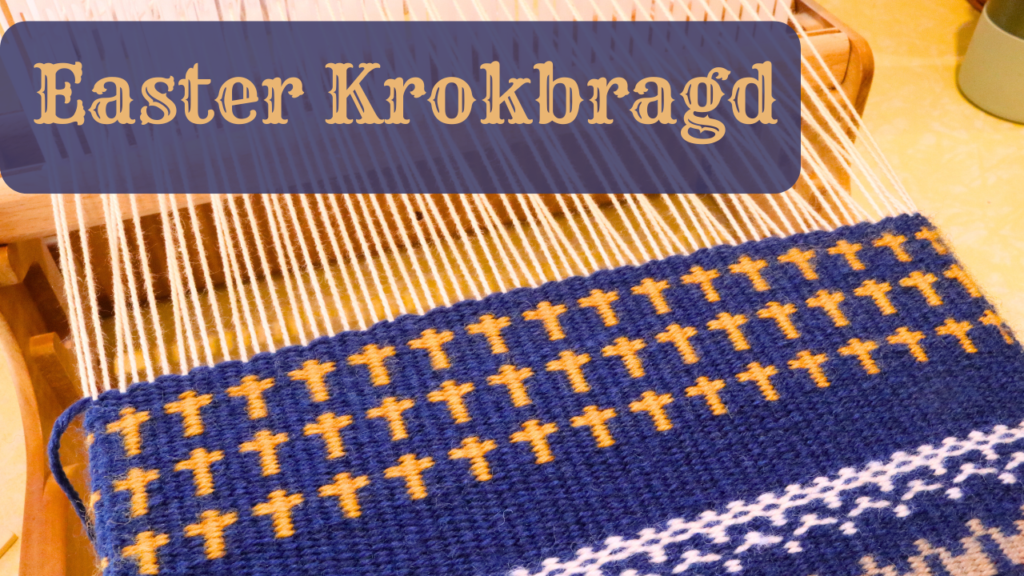
In this tutorial I am weaving krokbragd with two heddles, but you can absolutely use another setup such as a single heddle, pick up stick and heddle rod. Both of these methods are outlined in detail in my Krokbragd 101 course.
What you need for this tutorial
- A rigid heddle loom (I’m using my Ashford Sampleit)
- Two heddles of the same size
- Additional beater, such as a tapestry beater or fork
- Two shuttles (or use little yarn balls or butterflies if you prefer)
- Two contrasting weft yarns

There are all kinds of tapestry or additional beaters, and yes, a household fork works just fine. An additional beater is really essential for krokbragd though, as it is a weft faced weave structure and a regular rigid heddle/reed is not sufficient to beat the weft right down.
I beat the weft down every 3 weft rows – it saves time and is just as effective. Use your heddle to “place” the weft but use the additional beater to pack it down.

We only need 2 weft colours for weaving, so choose one colour that you would like your crosses to be and the other as the background. Make sure your colours have enough contrast to ensure boldness of the design.
You can place your weft yarns on stick shuttles, roll little balls or use yarn butterflies – all these methods work just fine.

Here is how the weft looks after weaving 3 weft rows and prior to packing the weft down.

And here is how it looks once packed down. You want to aim to cover the warp completely.
Now, how to weave.
If using two heddles, your heddle positions will be:
- Heddles 1 & 2 up
- Heddle 1 down
- Heddle 2 down
The colour sequences will be as follows (check colour key for abbreviations):
Colour key: Yellow (Y), Navy (N)
- Y,N,N x 5
- Y,N,Y x 2
- Y,N,N x 2
- N,N,N x 3
Exactly how you use the design is up to you – You can weave bands of crosses or repeats of crosses or a row of crosses embedded in strategically, there are so many options!
If you would like to see this sequence in action, check out the following video on Youtube:
I hope you enjoy weaving this design, if you have any questions or comments please leave them down below ⬇️
Until next time…
Happy Weaving!

